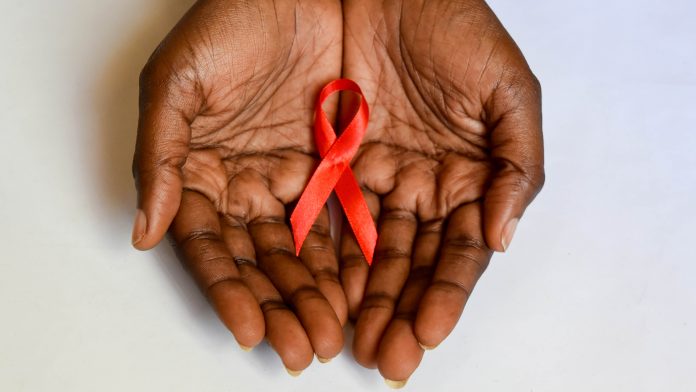
Inequality in all its forms is a barrier to reducing HIV transmission and ending the AIDS epidemic, Lorna Rothery spoke to Eamonn Murphy from UNAIDS about the related challenges and how they are being addressed.
Addressing inequalities within the HIV/AIDS response is critical and requires a multidisciplinary and multifactorial approach. Whether in relation to gender, geography, education or economics inequalities have a profound impact on HIV transmission and how, if or when people access vital health services. One organisation that works tirelessly to tackle the stigma and inequalities surrounding HIV and AIDS globally is UNIADS. Since launching almost three decades ago, the organisation has been driving change at global, regional, and national levels, connecting leadership from governments, the private sector, and communities to scale up and deliver life-saving HIV services. Central to their global strategy is the impact of gender inequalities; a report entitled ‘Dangerous Inequalities’ released last year documented how gender inequalities and harmful gender norms are hindering the world’s ability to meet the 2030 target of ending the AIDS pandemic. For instance, across 33 countries from 2015-2021, only 41% of married women aged between 15 and 24 could make their own decisions on sexual health. To discuss the impact of inequality on the HIV/AIDS response, Lorna Rothery spoke to Eamonn Murphy, who leads UNAIDS’ efforts in promoting an expanded and integrated United Nations system response to HIV across the Asia Pacific and Eastern Europe and Central Asia regions.
Can you highlight some of the key risks posed by gender inequality within the context of the HIV/AIDS response?
There are differences across a whole range of areas when we consider the inequalities men and women face. These variations in every part of the world impact our national response. For instance, in Eastern Southern Africa, the levels of risk for women of HIV acquisition are much higher than for men. Similarly, there are disparities in access to care for those living in rural compared to urban areas. In many countries, men do not readily access health services, so we need to consider any cultural barriers as well as how women are affected.
Our Global AIDS Strategy and response includes a political declaration on HIV/AIDS, which all Member States sign up to in New York through a general assembly process. It has a range of indicators and commitments within.
Most of my career has involved working in epidemic countries with key population-driven epidemics; when we look at access to services for drug users, for instance, male drug users are more targeted in many countries. For female drug users, there may be an extra cultural layer of burden, discrimination, and expectations. There are also inequalities between heterosexual men and men who have sex with men and how they access healthcare services. Equally, there are disparities in the terminology used in different countries; a man who has sex with men is the generic term used globally. There can be five or six terms for homosexuality, depending on what you do within that frame. Ultimately, there are so many different aspects that need to be unpacked within the context and impact of gender inequalities, but the most significant issue in parts of the world is women’s risk of HIV acquisition and lack of power in that dynamic.
We launched a new initiative called Education Plus, which centres on the importance of women accessing the right level of education for the right amount of time in order to empower them and reduce the risk of HIV infection. We know many of the cultures we work within are patriarchal, so the power dynamic starts there. If a girl completes secondary education, the risk of infection reduces by 50%. Women often access care more readily and much earlier than men, so there are different levels of engagement. Sometimes this increases the level of risk, depending on the risk of nosocomial infections in some countries.
We have levels of data for each country that they must unpack, which is why the inequalities framework of the global strategy is so important. The political declaration also includes targets that Member States have agreed to look at for the first time, including the political and legal barriers that stop people from accessing care. For example, if you criminalise HIV transmission in a country, even if you do not act on it, that prevents people from going anywhere near health services early on. That is a form of inequality which will have different impacts depending on your gender or your identity within society. Then there are other laws, such as the criminalisation of same-sex relations.
I was in a country in Central Asia recently where I met with a group of men who have sex with men, and when I asked them what we could do to help, they asked that we not address the law that criminalises same-sex relations. An NGO had tried to address this law a few years prior resulting in an increased number of people who had criminal action taken against them. Instead, the group wanted us to focus on the criminalisation of HIV transmission because it is one less thing that can be used against them to get bribes, force people into conflict situations or hide even more. Change has to be incremental.

How far do national, and international HIV/AIDS agendas incorporate unique vulnerabilities to HIV/AIDS?
Every year, there is a global AIDS report in June that tells us where we may be off-track, where we are doing well or the impact of global challenges such as COVID. The Global Aids Monitoring (GAM) report, where countries report against the political declaration and the agreed targets, helps us understand the dynamics of a particular region at regional, national, and global levels.
UNIAIDS creates detailed data sets for each country, which is validated with community and government partners. Countries are currently reviewing their previous plans and the implementation of those plans, as well as examining new data; unpacking and reporting on country-specific data is a key aim of the political declaration on HIV/AIDS and central to mapping out the dynamics within society that need to be addressed within the HIV response. Some countries have similarities, but then there are countries right next to each other, like Thailand and Myanmar, which have entirely different approaches concerning gender dynamics and epidemic profiles.
Each demographic is mapped out depending on the epidemic, and all epidemics need to look at the key populations. We do the mapping and target setting and, as part of that, look at what data there is around gender and what that is telling us in terms of service delivery, access to prevention, modalities to reach people etc. For instance, we need to consider how we can reach men who are not likely to access services as that has an impact on transmission.
National plans initially consider where a specific country is going to invest; prevention is a key area in which we are advocating greater investment going forward and which is central to the global strategy. Previous investments have focused heavily on treatment; in some countries where significant progress regarding treatment has been made, it has helped clarify where those inequalities lie regarding access to treatment.
The displacement of people is also a critical consideration in the HIV/AIDS epidemic. For instance, we have seen people working as migrant workers in Russia moving back to their home countries and men in Russia moving into other countries in the region; this, in turn, impacts the dynamics of the epidemic. Equally, we need to consider the risk behaviours that people may be forced into in a new setting due to mass migration or displacement. This is always analysed and mapped out at national and regional levels, with global support.
A report released by UNAIDS last year highlighted a ‘feminist route map’ as the only effective course to ending the AIDS pandemic. What can be done to meaningfully involve more women living with and affected by HIV/AIDS in all aspects of the HIV/AIDS response?
There is often too much of a dynamic of men involved in decision-making processes, so having a feminist route map, particularly in parts of the world where we get large epidemics, would be beneficial. If women are not actively engaged in the whole process, we have a one-sided lens, and this is why initiatives like Education Plus are so critical. Access to education is an underlying inequality that is exacerbating infections for women.
It is also about sharing responsibility, and not putting all the pressure on women because they may be easier to reach. Paediatrics and vertical transmission are key areas where men and women should be equally involved. The feminist route map is critical to ensuring that issues around gender inequalities are acknowledged within our response. UNIAIDS has embraced a feminist principles approach for our work to change some of those male-oriented or didactic approaches that have been used in the past.
There are powerful examples of women’s groups supporting each other to understand what this epidemic means for them and their families. So, we want to try and bring these elements into some of the policy and programmatic work that we do.
What would be your key message to world leaders to address inequalities across all aspects of the HIV response and ensure targets to end the AIDS pandemic by 2030 are reached?
Inequalities are at the heart of our global strategy, and in every country I have worked, inequalities are at the heart of many issues. But often these are areas that people find hardest to address. There are countries where workplace laws are so outdated that to be a taxi driver, you must have an HIV test every year. Where there are laws criminalising HIV transmission that can deter people from going anywhere near a health service when they are unwell. In Western countries, gay men may be less concerned about the social reaction, so they access services sooner, whereas in other countries, men are just not as empowered or have more sociocultural issues to deal with. In Eastern Europe, and Central Asia, one of our biggest problems is people coming to health services with a late-stage diagnosis when there are such powerful treatments that are available if accessed early on.
Old-fashioned treatment protocols still exist in some countries, where you need to have a CD4 count of 500 before someone can receive treatment, but we know same-day treatment – diagnosis into treatment – is so much more effective. The drugs are available, and they are cheap, so why can some people not access them sooner? These are the inequalities, stigma and discrimination that need to be addressed.
As innovations and long-acting medications are rolled out, the focus needs to be on access and not a repeat of the situation we saw with the accessibility of COVID-19 vaccines. It is a concern we have always had with HIV and that is why we push so hard for Trade-Related Aspects of Intellectual Property Rights (TRIPS) agreements and other legislative benefits to be part of the response. If we do not address these inequalities for gender dynamics and others, we will not make progress.
We have seen some positive changes around the world in decriminalising same-sex relations and implementing progressive transgender rights, but at the same time, there have been some adverse reactions. Some of the issues we are dealing with we dealt with 30 years ago and saw an improvement, but now we are seeing a decline due to a rise in conservatism. At the heart of this is inequality in all its forms – economic, social, and geographic. We need to see the lessons from the HIV response acknowledged in other areas, like universal health coverage, so this is not narrowed down to a biomedical response again. We are empowering the global community to take ownership of issues and be part of the solution.
This article is from issue 25 of Health Europa Quarterly. Click here to get your free subscription today.






















